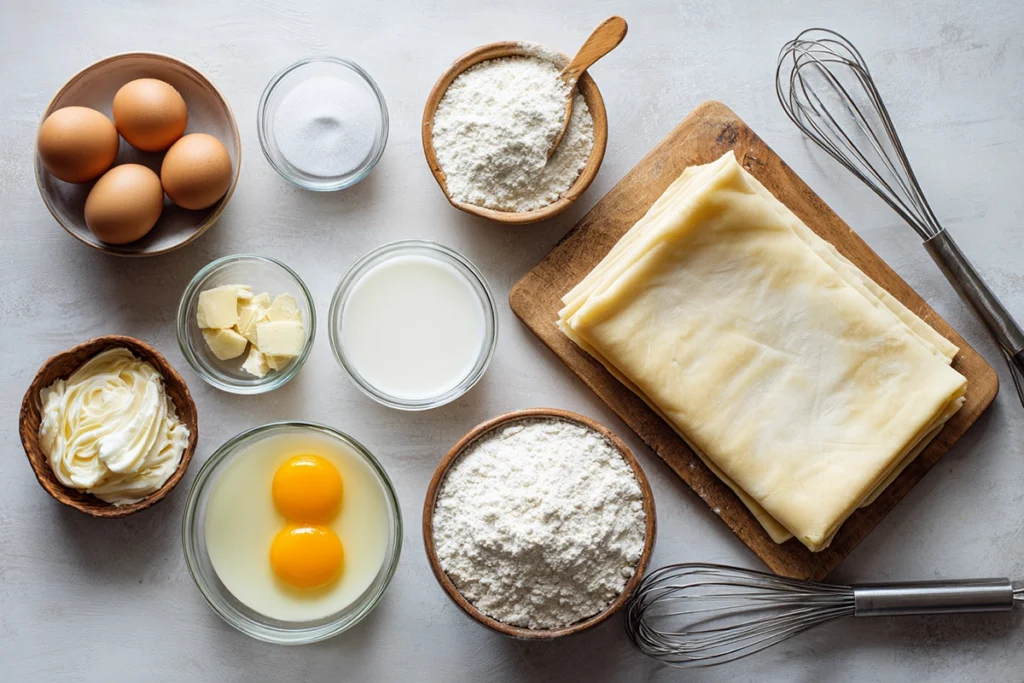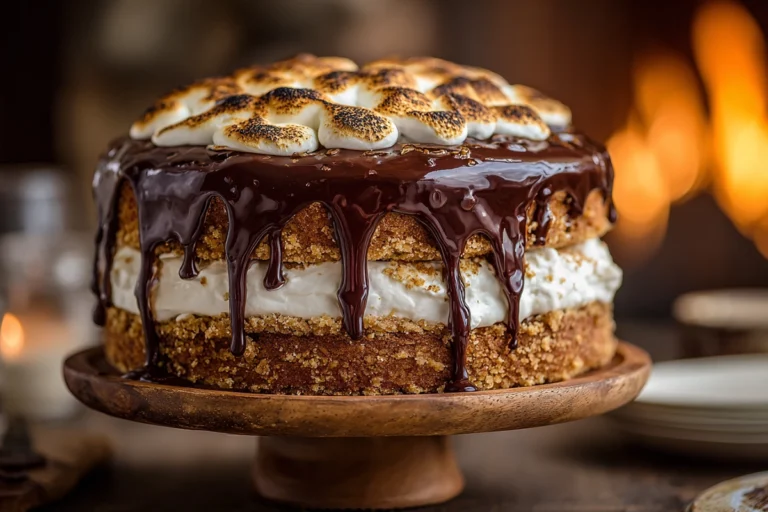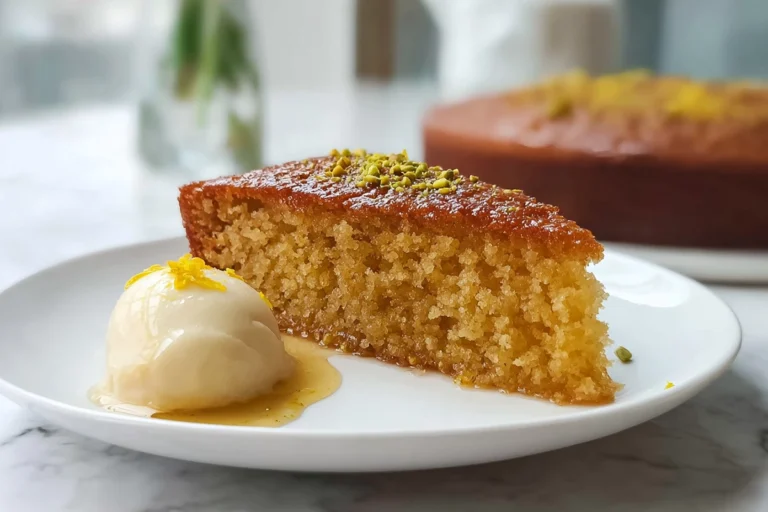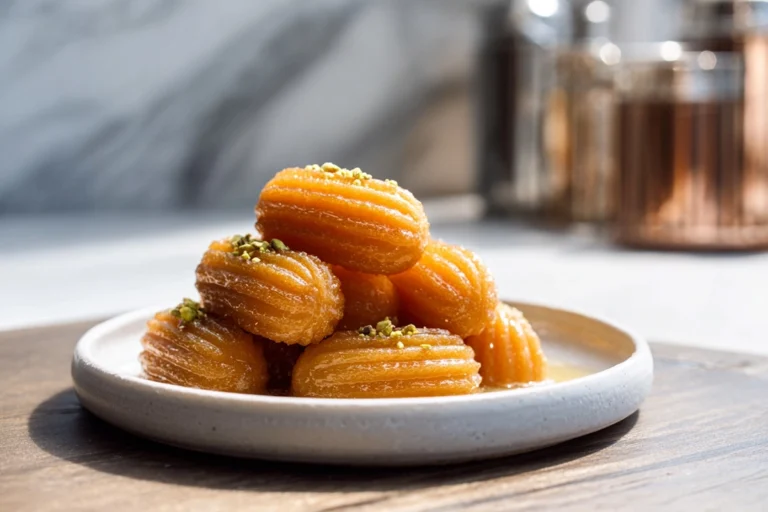Cannoncini: Flaky Italian Cream Horns You’ll Fall in Love With
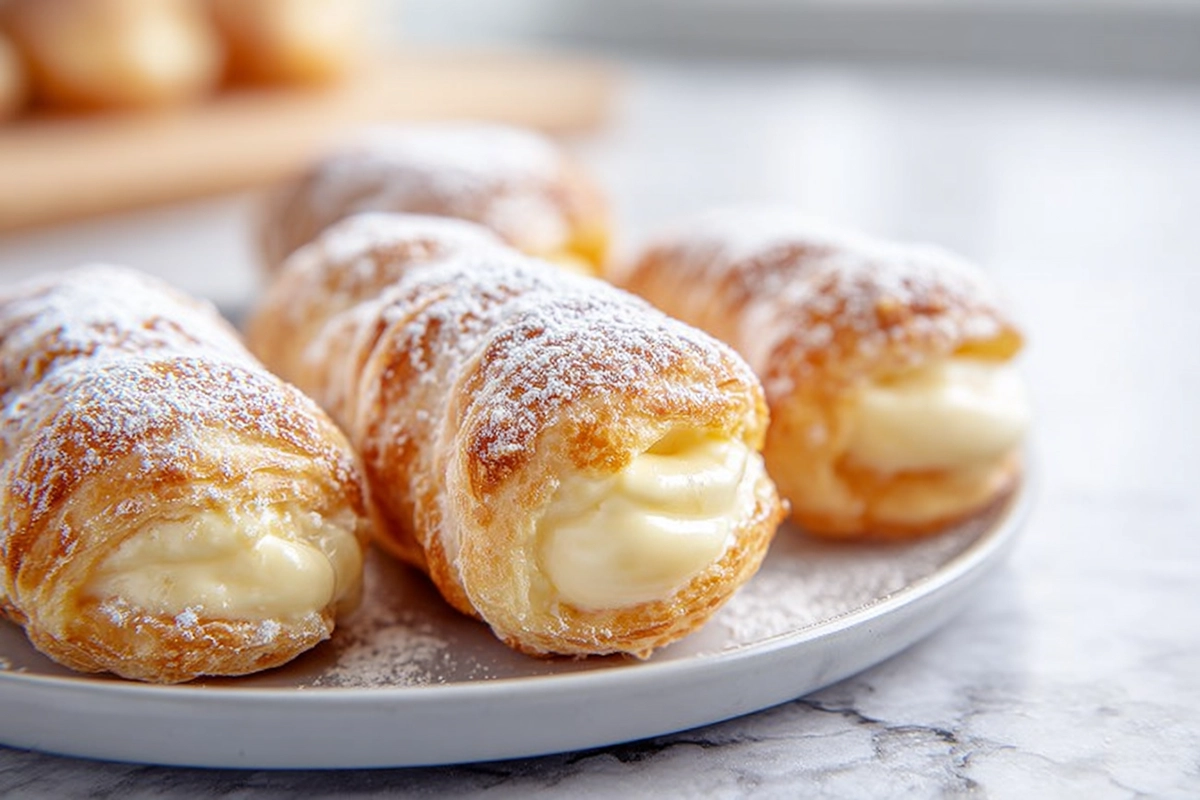
If you’ve ever strolled past a cozy Italian bakery and caught that buttery, sweet aroma that makes you stop in your tracks, chances are you were smelling cannoncini baking to perfection. I still remember the first time I bit into one—the crisp puff pastry shattered softly, revealing a smooth, cool vanilla cream that made me close my eyes for a second longer than I meant to. These golden horns aren’t just pastries; they’re tiny moments of happiness, wrapped in layers of flaky perfection and nostalgia. And the best part? You can make them right at home without flying to Milan or hunting for a fancy pastry shop.
Table of Contents
What Are Cannoncini?
At first glance, cannoncini might remind you of cream horns or even Italian cannoli, but they have their own irresistible charm. The word literally means “little cannons,” named for their hollow, spiraled shape. They’re made from buttery puff pastry wrapped around metal molds, baked until golden and crisp, and filled with a rich, velvety pastry cream.
These pastries originated in Northern Italy, particularly in the Piedmont region, where they’re often served alongside espresso or cappuccino. In Italy, they symbolize indulgence—a way to pause and enjoy something sweet, elegant, and simple. For American bakers, they strike a beautiful balance between impressive presentation and easy preparation, especially if you use store-bought puff pastry.
The magic lies in contrast: a shatteringly crisp shell meets cool, luscious cream inside. When you serve these at brunch or during the holidays, expect them to vanish faster than you can refill the plate.
Ingredients & Equipment Checklist
Making cannoncini at home doesn’t require fancy skills—just patience and the right tools. Here’s what you’ll need.
Ingredients
- 2 sheets puff pastry, thawed but cold
- ¼ cup granulated sugar, for coating
- 1 egg, beaten (for egg wash)
- 2 cups whole milk
- 4 egg yolks
- ½ cup sugar
- 3 tablespoons all-purpose flour
- 1 tablespoon cornstarch
- 1 teaspoon pure vanilla extract
- A pinch of salt
- Powdered sugar, for dusting
Equipment
- Metal horn molds (or homemade foil cones)
- Rolling pin and sharp knife or pizza cutter
- Piping bag with a round tip
- Whisk and saucepan
- Baking sheet with parchment paper
If you can’t find horn molds, no worries—simply wrap strips of puff pastry around small foil cones. The result is just as delicious and equally impressive.
Step-by-Step Preparation
Make the Pastry Cream
Start by preparing your filling. In a medium saucepan, warm the milk until just steaming but not boiling. In a separate bowl, whisk together egg yolks, sugar, flour, cornstarch, and salt until smooth. Slowly pour in the warm milk while whisking constantly to prevent curdling. Return the mixture to the heat and cook, stirring, until thick and creamy. Once done, remove from heat and add vanilla. Let the cream cool completely before chilling it in the refrigerator. This silky filling is what gives cannoncini their signature richness.
Shape and Bake the Pastry Shells
Preheat your oven to 400°F. Roll out the puff pastry sheets on a lightly floured surface, then cut into strips about 1 inch wide. Wrap each strip diagonally around a metal mold, overlapping slightly as you go. Brush each one lightly with beaten egg and sprinkle with sugar for that caramelized crunch.
Arrange them on the prepared baking sheet and bake for about 15–20 minutes, or until beautifully golden brown. Once they’re out, allow them to cool for a few minutes before gently removing the molds. The shells will be hollow, crisp, and ready to fill.

Assemble the Cannoncini
When both the cream and shells are cool, spoon the pastry cream into a piping bag and fill each horn from both ends. Dust with powdered sugar before serving. The combination of the flaky crust and the creamy filling is pure comfort in every bite.

Variations & Flavor Twists
Sweet Twists
Once you’ve mastered the basic recipe, it’s easy to get creative. Try filling your cannoncini with chocolate pastry cream, pistachio cream, or even lemon curd for a zesty punch. Dip the ends in melted dark chocolate and roll them in crushed nuts or sprinkles for an extra touch of texture. Around the holidays, a cinnamon-vanilla pastry cream adds a cozy seasonal vibe.
Savory Spin
You can also go off-script and turn these into savory puff pastry horns. Skip the sugar, and instead fill them with herbed ricotta, cream cheese with smoked salmon, or roasted red pepper hummus. They make stunning appetizers for brunches and parties.
Dietary Variations
Gluten-Free
Use gluten-free puff pastry (many brands now offer this in U.S. supermarkets) and substitute the all-purpose flour in your cream with cornstarch or a gluten-free flour blend. The texture remains smooth and creamy.
Vegan
Opt for dairy-free puff pastry and swap the milk with oat or almond milk. Replace the egg yolks with cornstarch to thicken the cream, and use a plant-based butter for richness. You’ll still get that familiar flakiness and custard-like filling without any animal products.
Low-Calorie or Low-Fat
Use reduced-fat milk and less sugar in the pastry cream. Mini cannoncini—bite-sized versions—help keep portion sizes in check while satisfying that sweet craving.
Halal or Kosher
These pastries are naturally adaptable; just ensure your puff pastry and flavor extracts are certified. Avoid alcohol-based flavorings, and you’ll have a dessert that fits most dietary needs.
Storage, Make-Ahead & Serving Tips
One of the great things about cannoncini is their flexibility. You can make the components ahead of time and assemble them right before serving for maximum freshness.
Storage
Keep unfilled shells in an airtight container at room temperature for up to three days. The pastry cream should be stored in the refrigerator and used within two days. Once filled, they’re best enjoyed the same day, though they’ll hold for up to 24 hours if refrigerated.
Make-Ahead Strategy
If you’re planning for a gathering, bake the shells the night before and prepare the cream separately. Assemble right before your guests arrive so the pastry stays crisp.
Serving Suggestions
Serve cannoncini on a platter dusted with powdered sugar or with fresh berries for color contrast. They pair beautifully with espresso, cappuccino, or even a sweet dessert wine if you’re feeling fancy.

Bringing cannoncini into your kitchen feels a bit like getting a piece of Italy home—simple ingredients transformed into something extraordinary. The first bite will remind you why pastry can be both comforting and elegant. Whether you’re making them for a weekend brunch or a special occasion, these little horns deliver all the buttery joy you could ask for, one flake at a time.
FAQ
What’s the difference between cannoncini and a regular cream horn?
A common question is how cannoncini differ from standard cream horns. In essence, cannoncini are the Italian version of cream horns—made with buttery puff pastry and filled with a silky crema pasticcera. The pastry often gets a sprinkle of sugar before baking to create a crisp, caramel-like shell, giving cannoncini a slightly more refined texture compared to many simpler versions.
Can I use store-bought pastry cream for cannoncini?
Yes, you absolutely can use store-bought pastry cream, but making your own vanilla custard provides richer flavor and better texture. If you go the convenience route, look for a thick, high-quality pastry cream—so the filling doesn’t make the shell soggy before you serve it.
Do I need special molds to make cannoncini at home?
While you can use special metal cream-horn or pastry-horn molds, you don’t have to. Many home bakers simply roll foil into cone shapes or repurpose small candlestick covers. The key is wrapping the pastry strip snugly and overlapping the edges so the shell bakes properly.
How should I store filled and unfilled cannoncini?
Unfilled pastry shells can be stored at room temperature in an airtight container for up to 2–3 days—they stay crisp. Once filled with cream, however, they should be refrigerated and eaten within 24 hours, because the moisture from the filling will soften the shell over time.
Get inspired with more mouthwatering recipes! Follow me on Facebook, Pinterest, and subscribe to YouTube for new cooking ideas every week.
Print
Cannoncini
- Total Time: 50 minutes
- Yield: 8 servings 1x
- Diet: Vegetarian
Description
If you’ve ever strolled past a cozy Italian bakery and caught that buttery, sweet aroma, chances are you were smelling cannoncini baking to perfection. These golden Italian cream horns combine crisp puff pastry shells with silky vanilla pastry cream, creating an irresistible dessert you can easily make at home.
Ingredients
- 2 sheets puff pastry, thawed but cold
- ¼ cup granulated sugar
- 1 egg, beaten
- 2 cups whole milk
- 4 egg yolks
- ½ cup sugar
- 3 tablespoons all-purpose flour
- 1 tablespoon cornstarch
- 1 teaspoon pure vanilla extract
- Pinch of salt
- Powdered sugar, for dusting
Instructions
- Warm milk in a saucepan until steaming.
- Whisk egg yolks, sugar, flour, cornstarch, and salt in a bowl.
- Slowly pour warm milk into the yolk mixture while whisking.
- Return to heat and cook until thick and creamy.
- Remove from heat, stir in vanilla, and chill the cream.
- Preheat oven to 400°F and cut puff pastry into 1-inch strips.
- Wrap strips around metal molds, brush with egg wash, and sprinkle with sugar.
- Bake 15–20 minutes until golden brown.
- Cool shells, remove molds, and fill with pastry cream.
- Dust with powdered sugar before serving.
Notes
- Use all-butter puff pastry for best flavor.
- Cool pastry completely before filling to prevent sogginess.
- Fill cannoncini just before serving for maximum crispness.
- Prep Time: 30 minutes
- Cook Time: 20 minutes
- Category: Dessert
- Method: Baking
- Cuisine: Italian
Nutrition
- Serving Size: 1 pastry
- Calories: 280
- Sugar: 18g
- Sodium: 90mg
- Fat: 14g
- Saturated Fat: 8g
- Unsaturated Fat: 5g
- Trans Fat: 0g
- Carbohydrates: 32g
- Fiber: 1g
- Protein: 5g
- Cholesterol: 95mg
What Are Our Readers Saying?
There are no reviews yet. Be the first one to write one.

